There can be your advertisement
300x150
Hospital from "Pokrovsky Gates": filming in real Moscow clinics
Reality of Soviet healthcare, with all its peculiarities and principles
The television film by Mikhail Kozakov became cult not only for the brilliant acting but also for the accurate portrayal of Moscow life in the 1950s. Two medical institutions are shown in the film: the hospital where Lyudochka works, which was filmed at the building of the State University of Land Management on Kazakova Street, 15, and the hospital where Khobotov had his appendix removed — at the historic Usachev-Naidenov estate on Zemlyany Val, 53. We tell you what we see on screen and how these locations created the atmosphere of Soviet medicine.
Main points from the article:
- The hospital where Lyudochka works was filmed at the building of the State University of Land Management on Kazakova Street, 15;
- The hospital where Khobotov was treated is the Usachev-Naidenov estate on Zemlyany Val, 53;
- In Soviet times, the estate housed a tuberculosis sanatorium called "High Mountains," later a medical and physical culture dispensary;
- The interiors accurately depicted the atmosphere of a Soviet hospital from the 1980s;
- Today, the estate houses a Center for Sports Medicine.
Two hospitals from the film
In "Pokrovsky Gates," we see two different medical institutions. The hospital where nurse Lyudochka works was filmed in the building of the State University of Land Management on Kazakova Street, 15 — a building that had no relation to healthcare at all.
The second hospital, where Khobotov’s appendix was removed, is the famous Usachev-Naidenov estate located on Zemlyany Val, 53. In Soviet times, it housed a tuberculosis sanatorium called "High Mountains," and later a medical and physical culture dispensary. Today, it houses the Center for Sports Medicine.
The Usachev-Naidenov estate is a notable monument of Moscow classicism, built between 1829 and 1831, and named "High Mountains" due to the steep slopes of the surrounding area.
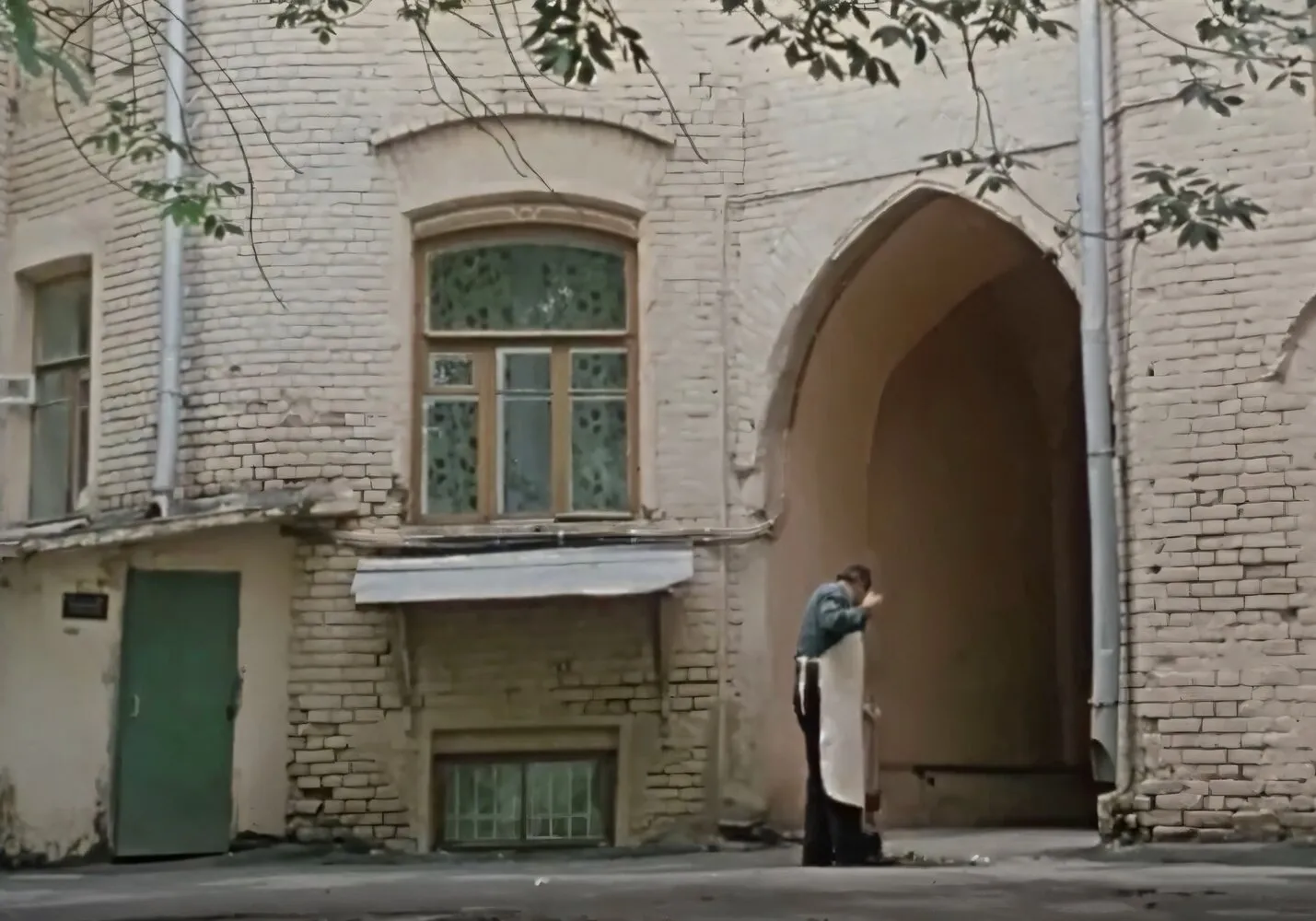
Scene from the movie 'Pokrovsky Gates'
Wards: Spartan simplicity
- Hospital wards in the film show the real life of Soviet patients;
- Iron beds with simple mattresses and white bedding — standard equipment for hospital rooms of that time;
- End tables beside each bed — simple wooden ones, without decoration. Space for patients' personal belongings;
- Large windows but no curtains or blinds — maximum natural light for treatment;
- Walls are bare and white, without paintings or decorations. Medical functionality takes precedence.

Scene from the movie 'Pokrovsky Gates'
Doctors' offices
- Medical offices in the film are strictly and functionally arranged;
- The doctor's desk is simple, wooden, with necessary documents and medical supplies;
- Examination couches — leather or canvas-covered, easy to disinfect;
- Medication cabinets — glass with locks, strictly organized;
- A sink in the corner of the office — a necessary detail for maintaining hygiene.
Medical equipment of the era
- The film shows medical equipment typical for Soviet hospitals in the 1980s;
- Sphygmomanometers, stethoscopes, thermometers — classic tools for doctors;
- Scale for weighing patients — mechanical, without electronics;
- Medical cabinets with tools — sterile and neatly organized;
- X-ray images through the light — a required part of diagnostics.
Medical staff uniforms
- Clothing worn by medical staff in the film matches the standards of that time;
- Doctors in white coats — long, buttoned up, strictly pressed;
- Nurses in white caps and coats — the uniform emphasized status and cleanliness;
- White or light-colored shoes — practical, comfortable for standing for long hours;
- No ornaments or bright colors — strictness and functionality.
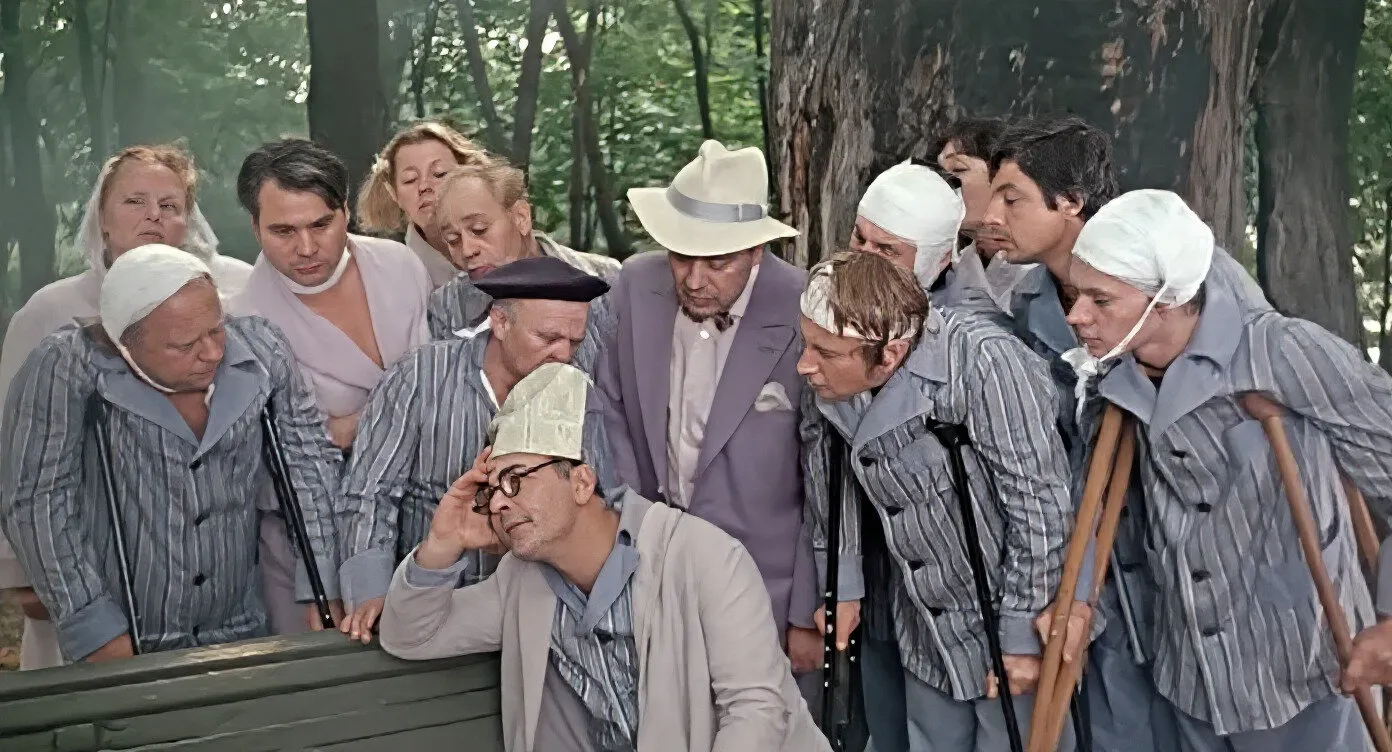
Scene from the movie 'Pokrovsky Gates'
Procedural rooms
- Procedural rooms are shown with all details of Soviet medicine;
- Examination couches with white sheets for procedures;
- Tables with medical instruments — all sterile and neatly arranged;
- Medication cabinets — locked, strictly accounted for;
- Sinks for handwashing — a required feature in any medical room.
Administrative rooms
- Hospital administration offices are modest but dignified;
- Managers’ desks — massive wooden tables with many drawers;
- Bookshelves filled with medical literature — a sign of education and professionalism;
- Portraits of leaders on the walls — a required detail in Soviet institutions;
- Safes for important documents — metal, secure.
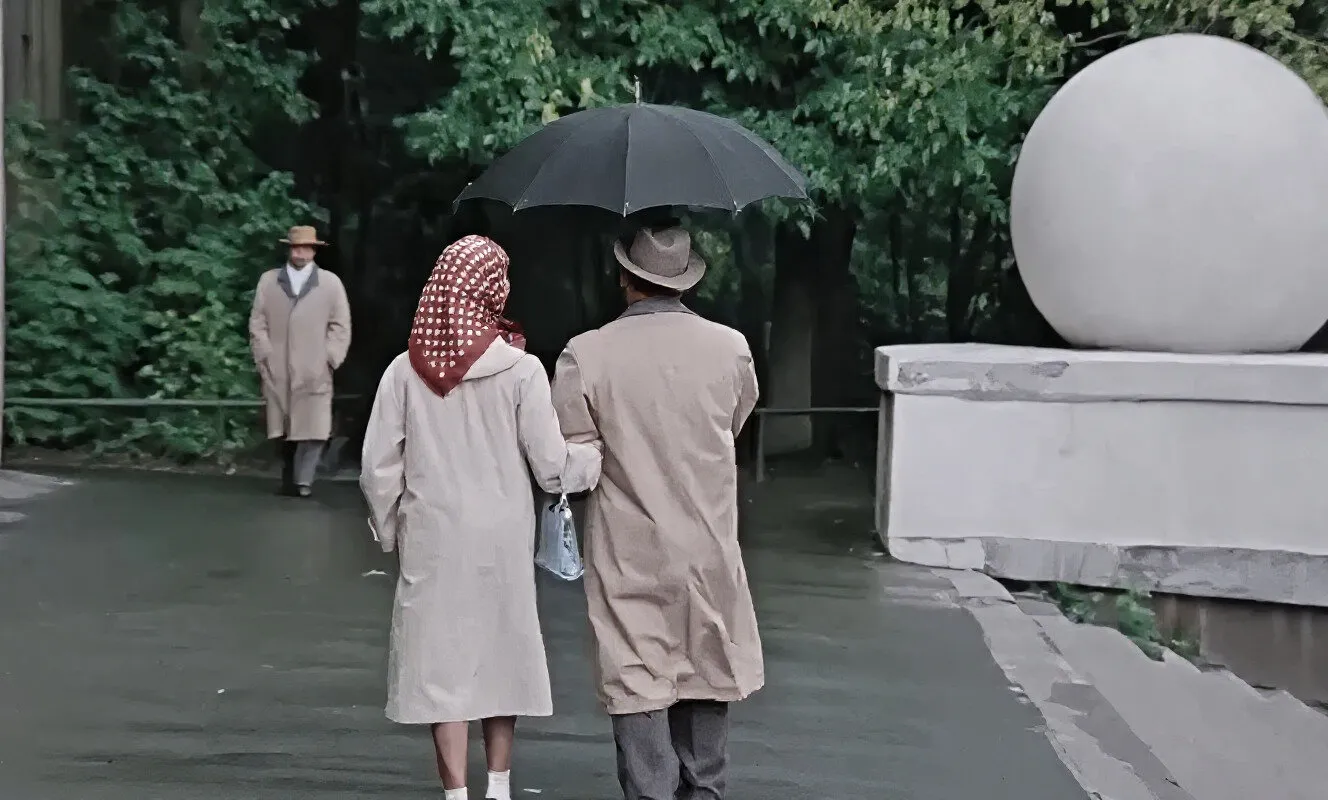
Scene from the movie 'Pokrovsky Gates'
Color palette of hospital interiors
- Colors in hospital rooms were strictly regulated by sanitary norms;
- White — the main color for walls, ceilings, and furniture. Symbol of cleanliness and sterility;
- Light green — often used in wards as a calming color;
- Gray — for floors and some interior elements, practical choice;
- No bright or dark colors — considered inappropriate for medical institutions.
Lighting in medical facilities
- Hospital lighting was strictly functional;
- Florescent lamps in corridors — bright, even light without shadows;
- Desk lamps in doctors' offices — for document work and patient examination;
- Large windows in wards — maximum natural light for recovery;
- Minimal night lighting — only what is necessary for duty staff.
Furniture in medical facilities
- All furniture in the hospital was strictly functional;
- Tables and chairs — simple, wooden, easy to clean;
- Cabinets — without embellishments, with transparent doors for easy inspection;
- Beds — metal, adjustable head height;
- End tables — without decoration, only for necessary items.
Sanitary facilities
- Toilets and bathrooms in hospitals were maximally practical;
- Tiled walls — for easy cleaning and disinfection;
- Simple plumbing — reliable, without frills;
- Handrails for patients — care for patient safety;
- Framesless mirrors — hygienic and practical.
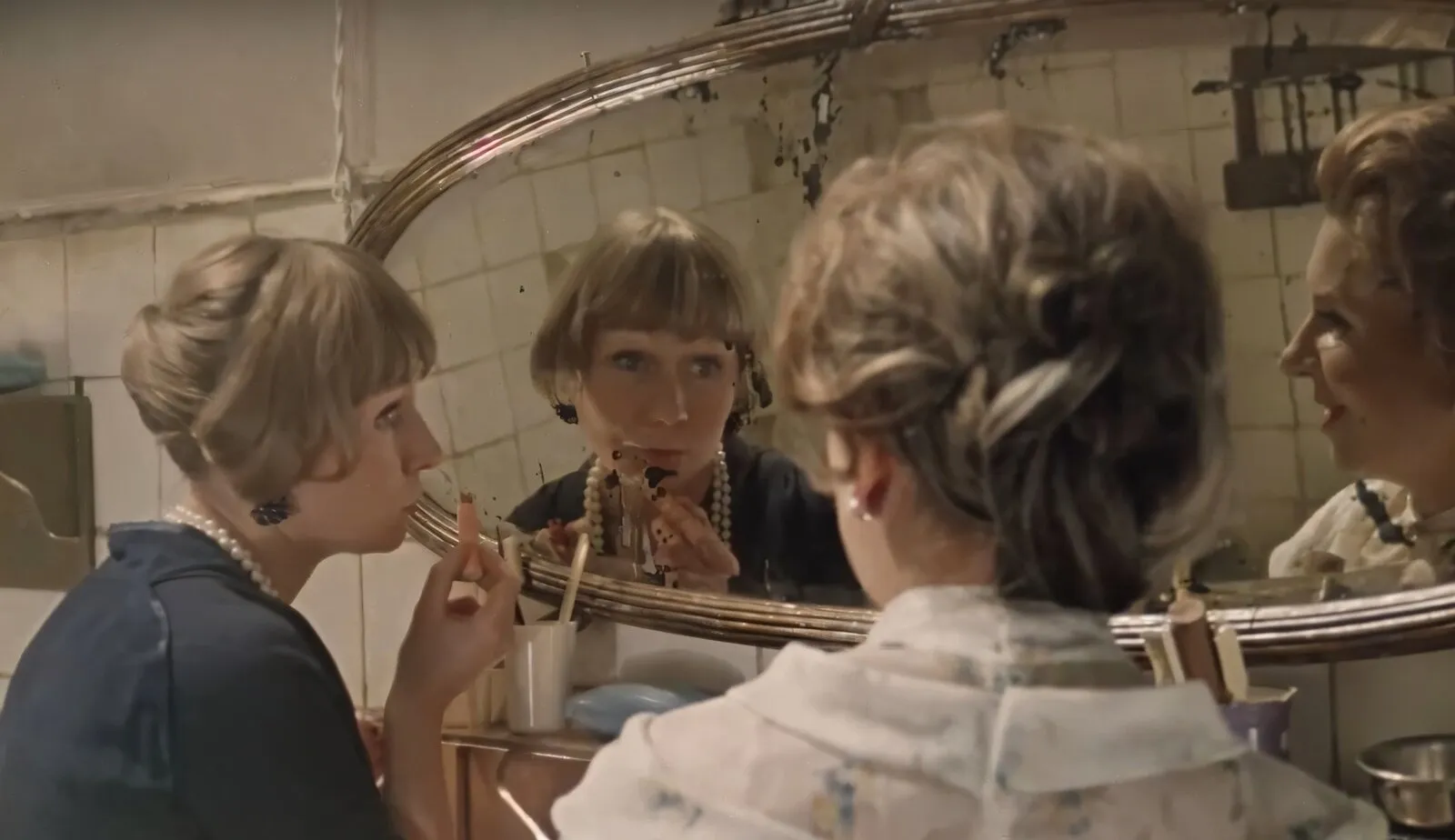
Scene from the movie 'Pokrovsky Gates'
Patient dining hall
- The hospital dining hall is shown as a strictly functional space;
- Long tables and benches — for maximum seating capacity;
- Simple dishes — aluminum plates and cups, easy to wash;
- Food distribution area — with a window for food pickup;
- No decorations — only necessary functionality.
The atmosphere of Soviet medicine
- Hospital interiors in the film convey the spirit of Soviet healthcare;
- Strictness and functionality — beauty is secondary to practicality;
- Cleanliness and order — main requirements for medical institutions;
- No luxury — equality of all patients in the face of illness;
- Professionalism of staff — the interior reflects the seriousness of medicine.

Scene from the movie 'Pokrovsky Gates'
Documentary value
- Hospital scenes from "Pokrovsky Gates" became a document of the era;
- They show what Soviet medicine looked like from the inside;
- The interiors reflect principles of socialist healthcare;
- Details of daily life help understand the attitude toward health in the USSR.
The hospital from "Pokrovsky Gates" remains a precise reflection of Soviet medicine in the 1980s. The interiors we see in the film are familiar to millions of people — this was the reality of Soviet healthcare, with all its peculiarities and principles.
More articles:
 Small Entryway Won't Be a Problem Anymore: Designer Tips for 3 sq. m
Small Entryway Won't Be a Problem Anymore: Designer Tips for 3 sq. m How to Transform a 75 m² Bare Cottages into a Cozy Country Cottage on a Budget
How to Transform a 75 m² Bare Cottages into a Cozy Country Cottage on a Budget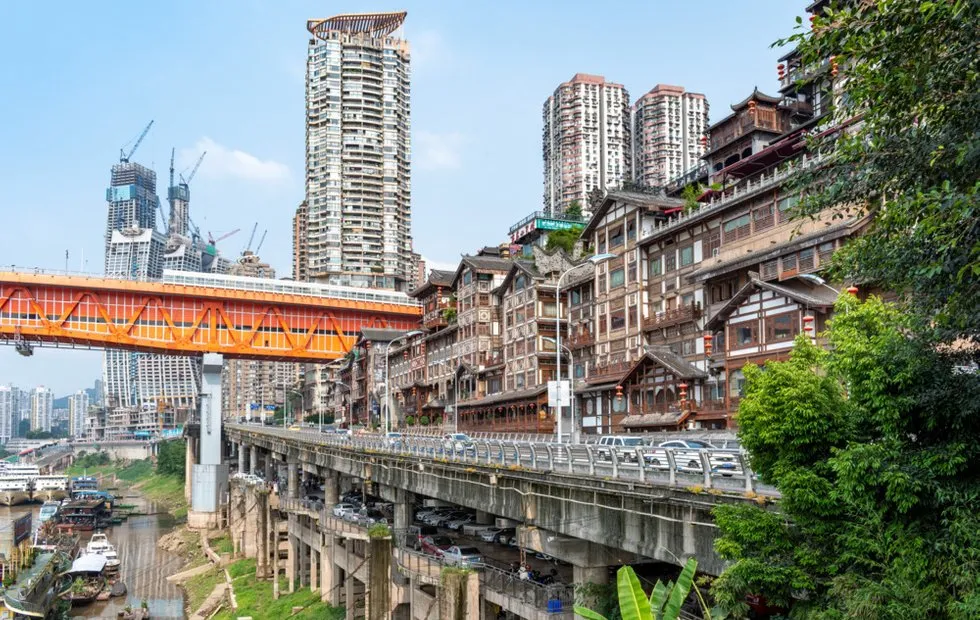 Secrets of Chongqing: The Most Unexpected Facts About This Multi-Level City That Will Shock You
Secrets of Chongqing: The Most Unexpected Facts About This Multi-Level City That Will Shock You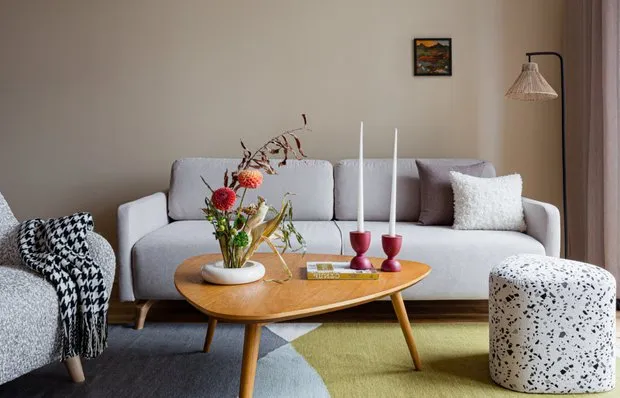 Soft Furniture for Home: Top-10 Trendy New Arrivals
Soft Furniture for Home: Top-10 Trendy New Arrivals Abandoned Paradise: What Hides the Island of Hasingama, Left Behind 50 Years Ago
Abandoned Paradise: What Hides the Island of Hasingama, Left Behind 50 Years Ago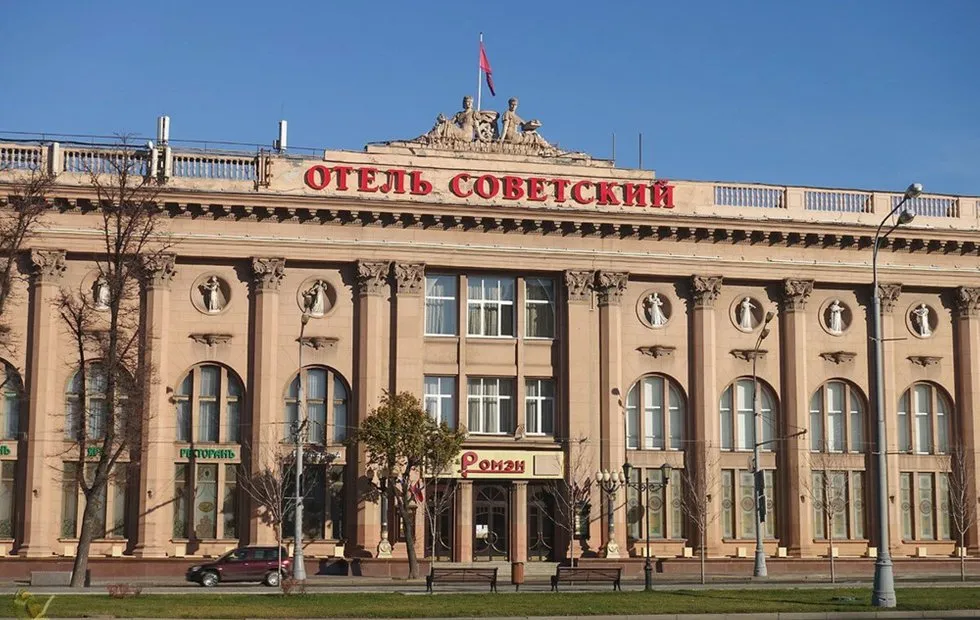 "Stalinist Empire in the Middle of the Forest": Mystery of the Soviet Hotel
"Stalinist Empire in the Middle of the Forest": Mystery of the Soviet Hotel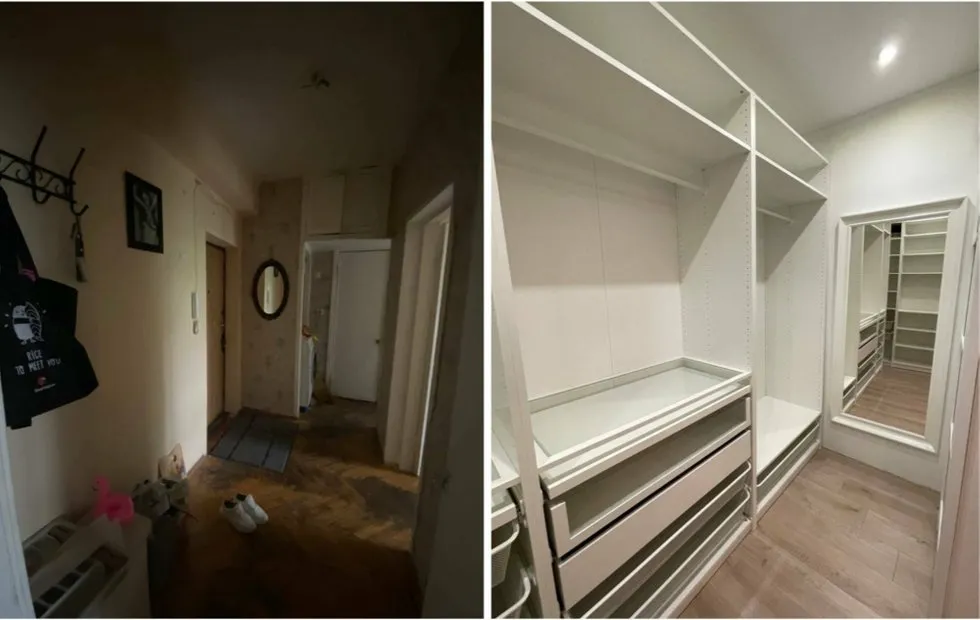 Walk-in Closet from Nowhere: How to Grab 5 Square Meters from a Standard Layout
Walk-in Closet from Nowhere: How to Grab 5 Square Meters from a Standard Layout Apartments in Stalin-era Buildings: 5 Inspirational Interiors That Will Astonish You
Apartments in Stalin-era Buildings: 5 Inspirational Interiors That Will Astonish You